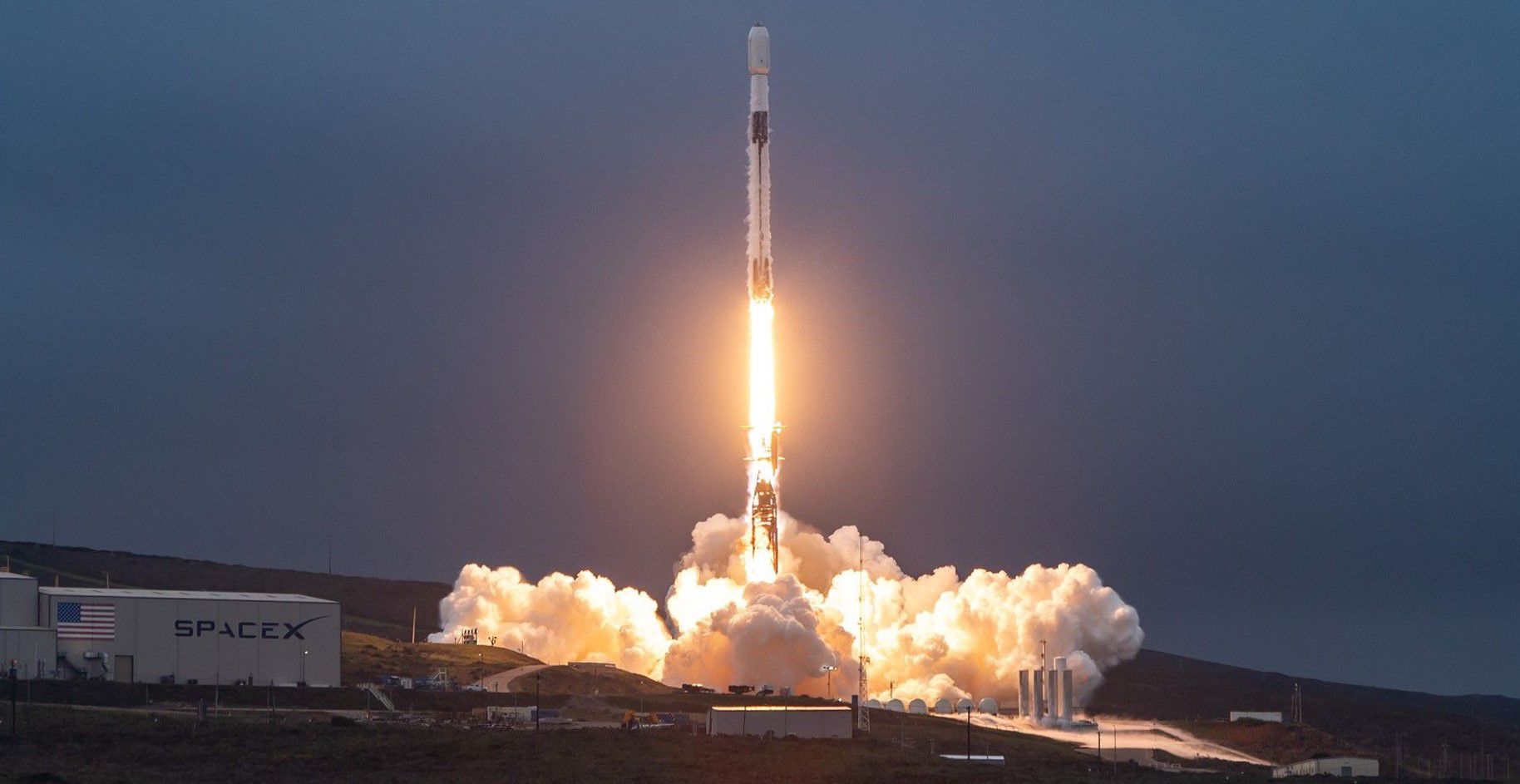
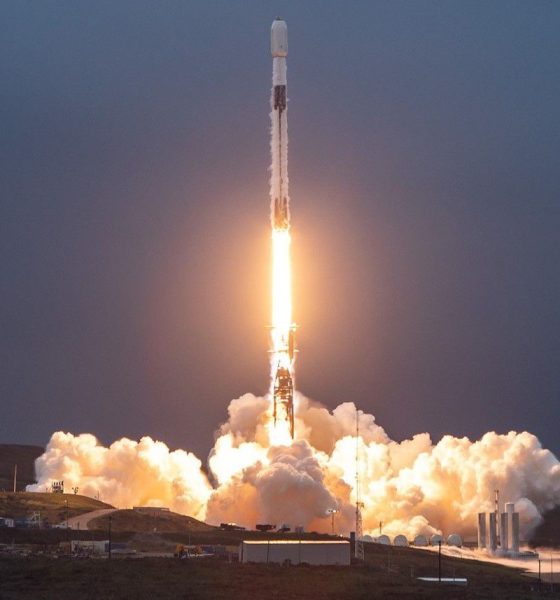
News
SpaceX launches first Starlink mission of 2023 after eight delays
A Falcon 9 rocket has successfully launched SpaceX’s Starlink 2-4 mission after seven delays pushed it from November 2022 to January 2023.
Starlink 2-4 was originally scheduled to launch as early as November 18th, 2022, but was delayed shortly after its Falcon 9 rocket conducted a static fire test. The delay was indefinite, and that specific rocket ultimately launched a different commercial payload in late December. The internet satellite launch was finally rescheduled for January 9th, 2023, kicking off a string of additional delays. Weather delayed the January 9th attempt. Issues with Falcon 9’s second stage delayed the January 10th attempt. Additional “pre-launch checkouts” delayed the launch from January 11th to the 14th, which was then pushed to January 15th for “constellation optimization.“
Poor weather delayed Starlink 2-4 from January 15th to January 18th, and SpaceX eventually delayed the mission to January 19th without explanation. On January 19th, SpaceX even delayed Starlink 2-4 an eighth time, from 7:23 am PST to 7:43 am PST. But at long last, Starlink 2-4 did, in fact, lift off at 7:43 am PST, ending the longest streak of delays experienced by SpaceX in several years.
The update that's rolling out to the fleet makes full use of the front and rear steering travel to minimize turning circle. In this case a reduction of 1.6 feet just over the air— Wes (@wmorrill3) April 16, 2024
In a rare twist, the first delay caused SpaceX to shuffle booster assignments, and Starlink 2-4 wound up with B1075. B1075 had never flown before, making Starlink 2-4 the second Starlink mission that has debuted a new Falcon booster. Ordinarily, SpaceX has always reserved new boosters – of which only a handful are built annually – for its more conservative customers. The US military in particular was slow to warm up to the idea of flying operational “national security” payloads on reused Falcon boosters, and often required (and paid for) new boosters whenever possible.
But even that wall mostly crumbled in 2022. SpaceX debuting another new Falcon 9 booster on its own low-priority Starlink mission is perhaps the best evidence of that. NASA and the US military have simply come to trust SpaceX’s flight-proven Falcon boosters, and no longer feel the need to reserve every new Falcon 9.
Falcon 9 booster B1075 ultimately aced its orbital-class launch debut and touched down on drone ship Of Course I Still Love You (OCISLY) about nine minutes after liftoff. Assuming the seas are calm enough for B1075 to survive the return to Port of Long Beach, it likely has a long life of 15+ launches ahead of it. The Falcon upper stage launched by B1075 eventually reached low Earth orbit (LEO) and deployed another 51 Starlink V1.5 satellites about 30 minutes after liftoff. Starlink 2-4 should leave SpaceX with almost 3400 working Starlink satellites in orbit.
OCISLY gets an upgrade
B1075’s landing also revealed upgrades SpaceX has made to drone ship OCISLY since it was last used in October 2022. Harry Stranger first discovered the changes with satellite imagery, which revealed that SpaceX was upgrading OCISLY’s rectangular with angular ‘wings’. The wings appear to be identical to those installed on SpaceX’s newest drone ship, A Shortfall of Gravitas. ASOG debuted in mid-2021 with a number of upgrades not present on SpaceX’s two other drone ships. Most were intended to improve the ship’s resiliency, availability, and autonomy.
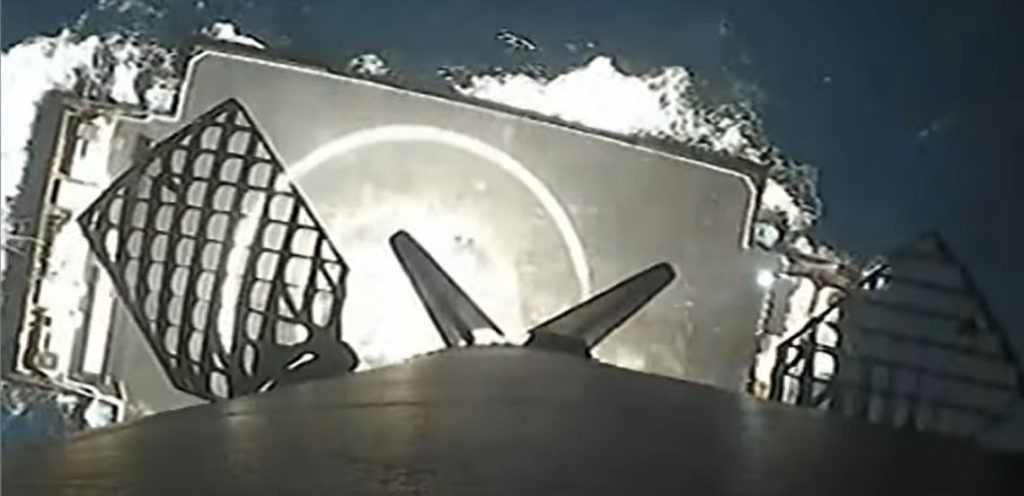

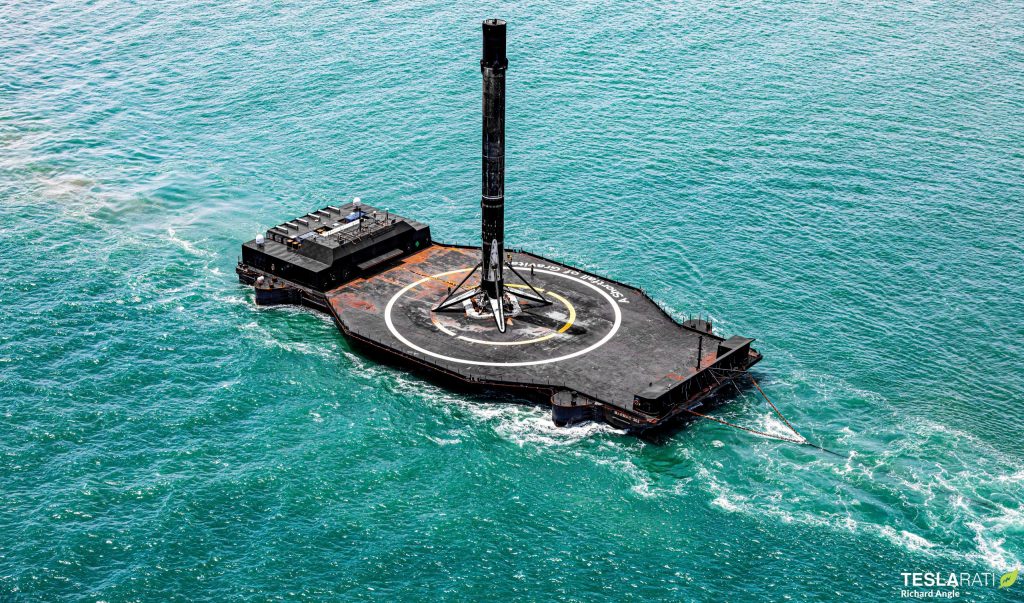
According to photographer Jerry Pike, the angular wings on ASOG (and now OCISLY) could make the drone ship much easier to tow. Reducing drag could also increase the effectiveness of their existing propulsion systems, potentially allowing them to maintain their position in harsher sea conditions and stronger currents than before. SpaceX CEO Elon Musk has previously stated that the ultimate goal is a fully-autonomous drone ship capable of heading to sea, recovering Falcon boosters, and returning to port without human intervention.
There is no evidence that SpaceX is any closer to that goal since ASOG’s debut 16 months ago. Nonetheless, OCISLY’s upgrades should improve the drone ship’s usability as SpaceX attempts to launch (and land) up to 100 rockets in 2023.

Elon Musk
Tesla CEO Elon Musk confirms Robotaxi safety monitor removal in Austin: here’s when
Musk has made the claim about removing Safety Monitors from Tesla Robotaxi vehicles in Austin three times this year, once in September, once in October, and once in November.

Tesla CEO Elon Musk confirmed on Tuesday at the xAI Hackathon that the company would be removing Safety Monitors from Robotaxis in Austin in just three weeks.
This would meet Musk’s timeline from earlier this year, as he has said on several occasions that Tesla Robotaxis would have no supervision in Austin by the end of 2025.
On Tuesday, Musk said:
“Unsupervised is pretty much solved at this point. So there will be Tesla Robotaxis operating in Austin with no one in them. Not even anyone in the passenger seat in about three weeks.”
Musk has made the claim about removing Safety Monitors from Tesla Robotaxi vehicles in Austin three times this year, once in September, once in October, and once in November.
In September, he said:
“Should be no safety driver by end of year.”
The safety driver is just there for the first few months to be extra safe.
Should be no safety driver by end of year.
— Elon Musk (@elonmusk) September 4, 2025
On the Q3 Earnings Call in October, he said:
“We are expecting ot have no safety drivers in at least large parts of Austin by the end of this year.”
Finally, in November, he reiterated the timeline in a public statement at the Shareholder Meeting:
“I expect Robotaxis to operate without safety drivers in large parts of Austin this year.”
Currently, Tesla uses Safety Monitors in Austin in the passenger’s seat on local roads. They will sit in the driver’s seat for highway routes. In the Bay Area ride-hailing operation, there is always a Safety Monitor in the driver’s seat.
Three weeks would deliver on the end-of-year promise, cutting it close, beating it by just two days. However, it would be a tremendous leap forward in the Robotaxi program, and would shut the mouths of many skeptics who state the current iteration is no different than having an Uber.
Tesla has also expanded its Robotaxi fleet this year, but the company has not given exact figures. Once it expands its fleet, even more progress will be made in Tesla’s self-driving efforts.
News
SpaceX reportedly mulling IPO, eyeing largest of all time: report
“I do want to try to figure out some way for Tesla shareholders to participate in SpaceX. I’ve been giving a lot of thought to how to give people access to SpaceX stock,” Musk said.
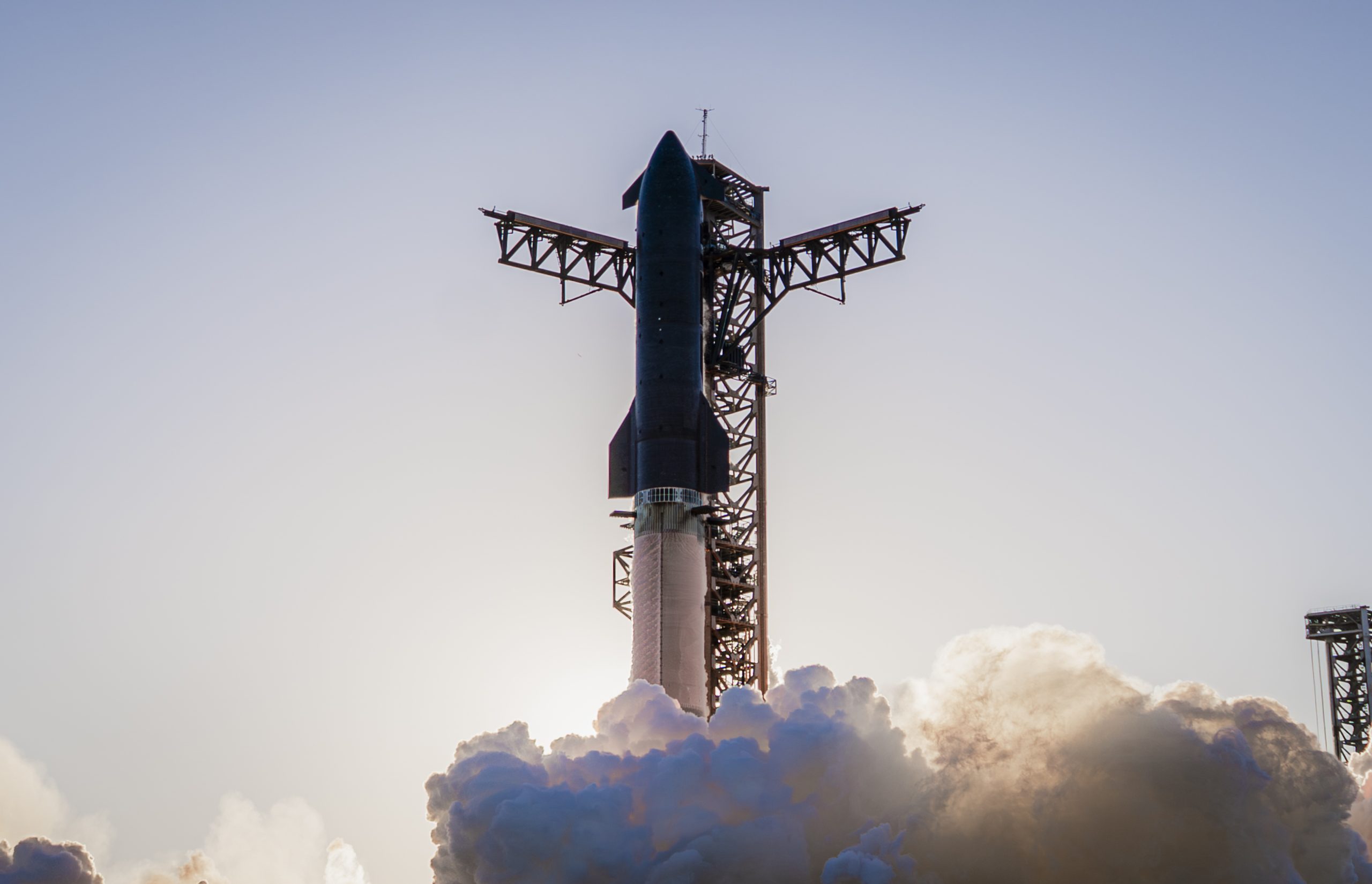
SpaceX is reportedly mulling an initial public offering, eyeing what would be the largest valuation at the time of availability of all time, a new report from Bloomberg said on Tuesday.
It is one of many reports involving one of Elon Musk’s companies and a massive market move, as this is not the first time we have seen reports of an IPO by SpaceX. Musk himself has also dispelled other reports in the past of a similar nature, including an xAI funding round.
SpaceX and Musk have yet to comment on the report. In the past, untrue reports were promptly replied to by the CEO; this has not yet gained any response, which is a good sign in terms of credibility.
However, he said just a few days ago that stories of this nature are inaccurate:
“There has been a lot of press claiming SpaceX is raising money at $800B, which is not accurate. SpaceX has been cash flow positive for many years and does periodic stock buybacks twice a year to provide liquidity for employees and investors. Valuation increments are a function of progress with Starship and Starlink and securing global direct-to-cell spectrum that greatly increases our addressable market. And one other thing that is arguably most significant by far.”
There has been a lot of press claiming @SpaceX is raising money at $800B, which is not accurate.
SpaceX has been cash flow positive for many years and does periodic stock buybacks twice a year to provide liquidity for employees and investors.
Valuation increments are a…
— Elon Musk (@elonmusk) December 6, 2025
Musk has discussed a potential IPO for SpaceX in recent months, as the November 6 shareholder meeting, as he commented on the “downsides” of having a public company, like litigation exposure, quarterly reporting pressures, and other inconveniences.
Nevertheless, Musk has also said he wants there to be a way for Tesla shareholders to get in on the action. At the meeting in early November, he said:
“I do want to try to figure out some way for Tesla shareholders to participate in SpaceX. I’ve been giving a lot of thought to how to give people access to SpaceX stock.”
Additionally, he added:
“Maybe at some point., SpaceX should become a public company despite all the downsides of being public.”
Musk has been historically reluctant to take SpaceX public, at times stating it could become a barrier to colonizing Mars. That does not mean it will not happen.
Bloomberg’s report cites multiple unidentified sources who are familiar with the matter. They indicate to the publication that SpaceX wants to go public in mid-to-late 2026, and it wants to raise $30 billion at a valuation of around $1.5 trillion.
This is not the first time SpaceX has discussed an IPO; we reported on it nine years ago. We hope it is true, as the community has spoken for a long time about having access to SpaceX stock. Legendary investor Ron Baron is one of the lucky few to be a SpaceX investor, and said it, along with Tesla, is a “lifetime investment.”
Tesla bull Ron Baron reveals $100M SpaceX investment, sees 3-5x return on TSLA
The primary driver of SpaceX’s value is Starlink, the company’s satellite internet service. Starlink contributes 60-70 percent of SpaceX’s revenue, meaning it is the primary value engine. Launch services, like Falcon 9 contracts, and the development of Starship, also play supporting roles.
News
SpaceX reaches incredible milestone with Starlink program

SpaceX reached an incredible milestone with its Starlink program with a launch last night, as the 3,000th satellite of the year was launched into low Earth orbit.
On Monday, SpaceX also achieved its 32nd flight with a single Falcon 9 rocket from NASA’s Kennedy Space Center.
The mission was Starlink 6-92, and it utilized the Falcon 9 B1067 for the 32nd time this year, the most-used Falcon booster. The flight delivered SpaceX’s 3000th Starlink satellite of the year, a massive achievement.
There were 29 Starlink satellites launched and deployed into LEO during this particular mission:
Falcon 9 launches 29 @Starlink satellites from Florida pic.twitter.com/utKrXjHzPN
— SpaceX (@SpaceX) December 9, 2025
SpaceX has a current goal of certifying its Falcon boosters for 40 missions apiece, according to Spaceflight Now.
The flight was the 350th orbital launch from the nearby SLC-40, and the 3,000 satellites that have been successfully launched this year continue to contribute to the company’s goal of having 12,000 satellites contributing to global internet coverage.
There are over five million users of Starlink, the latest data shows.
Following the launch and stage separation, the Falcon 9 booster completed its mission with a perfect landing on the ‘Just Read the Instructions’ droneship.
The mission was the 575th overall Falcon 9 launch, highlighting SpaceX’s operational tempo, which continues to be accelerated. The company averages two missions per week, and underscores CEO Elon Musk’s vision of a multi-planetary future, where reliable connectivity is crucial for remote work, education, and emergency response.
As Starlink expands and works toward that elusive and crucial 12,000 satellite goal, missions like 6-92 pave the way for innovations in telecommunications and enable more internet access to people across the globe.
With regulatory approvals in over 100 countries and millions of current subscribers, SpaceX continues to democratize space, proving that reusability is not just feasible, but it’s also revolutionary.








